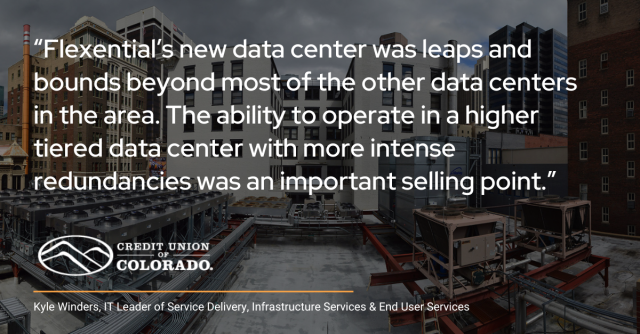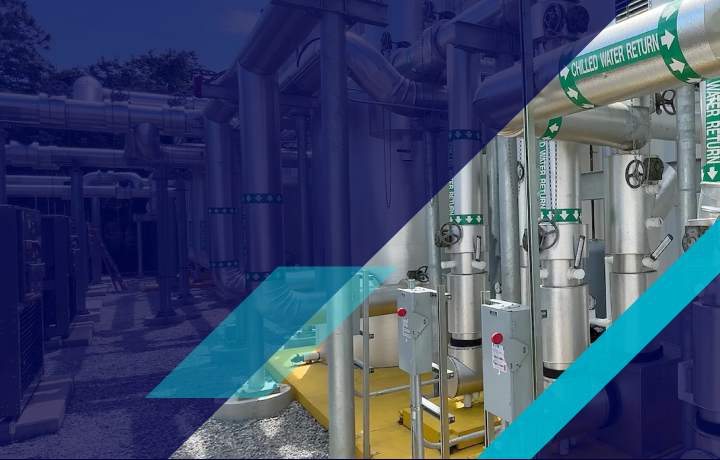Real-world ramifications of a single point of failure
It's important to be aware of the potential risk of a single point of failure (SPOF) in any circuit or system. This occurs when a flaw in design, implementation, or configuration could cause a complete shutdown.

How to identify a single point of failure
If a single point of failure (SPOF) occurs in a data center or other IT environment, it could potentially affect the availability of workloads or the entire data center. The impact of the failure will depend on its location and the interdependencies involved. Don't let this possibility deter you- identifying and addressing SPOFs can help ensure smooth and uninterrupted operation.
To prevent Single Points of Failure (SPOFs) from causing problems in the future, it's important to first identify these weak points. This can be done during the system design phase, specifically during the business impact analysis and risk assessment stages. It's helpful to start with the hardware components of your IT infrastructure and identify any areas that lack redundancy. This can help you determine the potential impact of a failure and take appropriate measures to mitigate it.
Once you've identified potential hardware issues, it's important to also assess your services and personnel. This can be a challenging process, so don't hesitate to seek input from experts if needed. As you identify potential SPOFs, create a list of all systems and components used in your organization, including servers, storage devices, ISPs, and networks.
It's important to encourage team members to participate fully in the process, even if they may be hesitant to disclose potential problems. Make it clear that the objective is not to punish anyone but rather to create a stable and reliable system. By taking these steps, you can create a mitigation strategy that will help prevent SPOFs from causing disruptions in the future.
Examples of a single point of failure
Here are some examples of situations where a single point of failure can lead to serious problems:
- Relying on one piece of server hardware to run a crucial system can result in costly downtime if the hardware fails.
- If all your servers are connected to a single network switch, a failure or disconnection of the switch can make all the servers inaccessible.
- Depending on only one internet service provider for your business needs means that if there is an outage, your operations could suffer significant losses in time and money.
- Assigning only one employee, subject matter expert, or consultant to a critical business application can be risky. If that person leaves, your operations can be severely impacted if you don't have qualified personnel who can take over and troubleshoot any issues with the application.
Protection against a single point of failure
After identifying single points of failure (SPOFs) in your infrastructure, it is important to create a mitigation strategy. A commonly used strategy involves taking these actions:
- Ensure all systems and their components are backed up in case of failure. These backups can serve as replacements for any problematic systems.
- Carefully inspect backup, disaster recovery, and business continuity plans for any weaknesses that could lead to system failure. If flaws are found, update the plans accordingly and address the issues.
- Create contingency plans for internet access. Consider subscribing to multiple ISPs if your budget permits. Though costly, having backup ISPs can help maintain internet access if your primary ISP experiences an issue. Additionally, request contingency plans from your ISPs in the event of a system attack. Regularly test and adjust these plans as needed.
- Prepare your team and employees to handle sensitive tasks. Ensure everyone can take on tasks previously assigned to a resource that becomes unavailable or leaves the organization.
Examples of single points of failure in data centers
Suppose a data center has a single point of failure. In that case, it can affect the availability of workloads or even the entire location, depending on the dependencies involved and where the failure occurs. This can lead to decreased productivity and business continuity, as well as compromised security.
To get a better understanding of how a SPOF can occur, let's explore two examples in a data center:
- Single server. In this scenario, a server runs a single application, and if the hardware of the server fails, the application's availability would be affected, and it could even crash. This would prevent users from accessing the application and could lead to data loss. However, using server clustering technology can help mitigate this problem. By running a duplicate copy of the application on a second server, the second server can take over if the first one fails, thereby preserving access to the application.
- Lone network switch. The second example is when all servers are connected to a single network switch, becoming a single point of failure. If the switch fails or loses power, all the servers connected to it cannot be accessed from the rest of the network, making it a potential SPOF. For larger switches, this problem can impact many servers and their workloads. However, redundant switches and network connections can provide alternative paths for interconnected servers, avoiding the risk of SPOF. It is important to identify potential SPOFs to plan for redundancy and minimize the impact of any failures.
Staying ahead of potential issues
Did you know that many data centers experience failures without their administrators even realizing it? With so many different components at play, from servers to environmental management systems, it's easy for a single point of failure (SPOF) to bring the entire system and everything crashing down. This is why it's crucial to identify potential risks and take steps to mitigate them before they turn into disasters.
When a critical system fails, such as a dedicated server without a backup plan, it can seriously disrupt an organization's activities. But don't worry; there are ways to prevent this. By pinpointing SPOFs and implementing fault-tolerant solutions, you can safeguard the other components of your data center and keep your business running smoothly.
With the right expertise and tools, you can stay one step ahead of any potential issues. Here's a list of steps to ensure a thorough examination of your data center and help identify areas of concern:
- Review a map of the data center that displays all components and their locations.
- Physically inspect the data center using a flashlight to remove floor tiles and plates covering equipment and cabling.
- Analyze network diagrams for the data center and other parts of the building.
- Inspect external cables, including power supplies and communication lines, and their entry points.
- Verify that all technical diagrams are up to date, as they are valuable resources for assessment.
How to avoid single points of failure
When designing a data center infrastructure, the responsibility lies with the data center architect to ensure that there are no single points of failure. However, it is important to keep in mind that ensuring this type of resiliency can be expensive. This may involve adding extra servers to a cluster, as well as more network interfaces, switches, and cabling. Architects must carefully weigh the importance of each workload against the cost of avoiding any potential single points of failure.
When making decisions, it can be helpful to have a risk management strategy in place. Single points of failure that are deemed important enough to prevent can be mitigated or eliminated. There are several ways to mitigate single failure issues, including:
- Backup and redundant systems and software components can protect against the loss of a primary system.
- Having a second channel or conduit for redundant network cabling can prevent the loss of connections to local carriers and internet service providers.
- Load balancers can send requests for service only to servers that are online and in use, which reduces the threat of single points of failure when multiple servers are in use.
- Backup power and other electrical systems can protect against the loss of power and intermittent power fluctuations that can disrupt business operations. This can include lightning arrestors and electrical grounding to reduce the threat of power surges.
- Keeping the data security infrastructure up to date can help mitigate the threat of cybersecurity attacks. This includes setting and patching security tools and firewalls with current database rules that match the level of software in use.
- People can also be single points of failure. For example, an organization can be vulnerable if one person has all knowledge of a critical system. Cross-training employees is a wise approach to mitigate this risk.
Improving reliability
In a past article, we wrote about some of the common network performance challenges our customers face and how to address them. Cloud deployments are increasingly integrated into IT strategies, making reliable cloud connections essential to provide end-users with better performance. The FlexAnywhere® Solution blueprint uses Cloud Fabric for secure, low-latency, direct connections to the leading cloud service providers such as AWS, Microsoft Azure, Google Cloud, and Oracle Cloud. To reduce single points of failure, the network is continually monitored to ensure its performance and reliability, and Flexential offers a 100% network uptime and bandwidth commitment.
Leveraging colocation
Flexential customer, Credit Union of Colorado, chose our Denver facility to deploy its environment due to our carrier-neutral approach, which allows them to build a blended network from a diverse portfolio of 300+ on-net carriers to ensure no single point of failure and eliminate carrier-related outages experienced with its internal solution.
Flexential backs up this reliability with a 100% SLA on power, cooling, network, and bandwidth to ensure the Credit Union of Colorado’s infrastructure is always available to support its members and ensure its members will have uninterrupted access to their accounts and funds.
The Flexential deployment also helped the credit union attain a 40%+ ROI vs. build, which it can filter back into its business to provide members with improved services and market-leading rates. “Flexential’s new data center was leaps and bounds beyond most of the other data centers in the area,” said Kyle Winders, IT Leader of Service Delivery, Infrastructure Services & End User Services for Credit Union of Colorado. “The ability to operate in a higher tiered data center with more intense redundancies was an important selling point.”
Optimizing network performance and reliability
Application performance and reliability are critical for businesses to deliver exceptional user experiences and maintain operational efficiency. Flexential addresses customers' performance concerns by providing solutions that optimize application performance with a national fleet of N+1 fault-tolerant UPS and N+1 cooling redundancy data centers. Through advanced network connectivity, edge computing capabilities, and performance monitoring tools, we enhance the user experience and enable faster, more efficient data processing. We also prioritize reliability and business continuity, offering redundant infrastructure, disaster recovery solutions, and robust backup systems. Our goal is to minimize downtime, mitigate risks, and protect critical data and applications.
As a trusted partner, we're here to help enterprises overcome complex reliability, agility, and performance challenges. Learn more!





